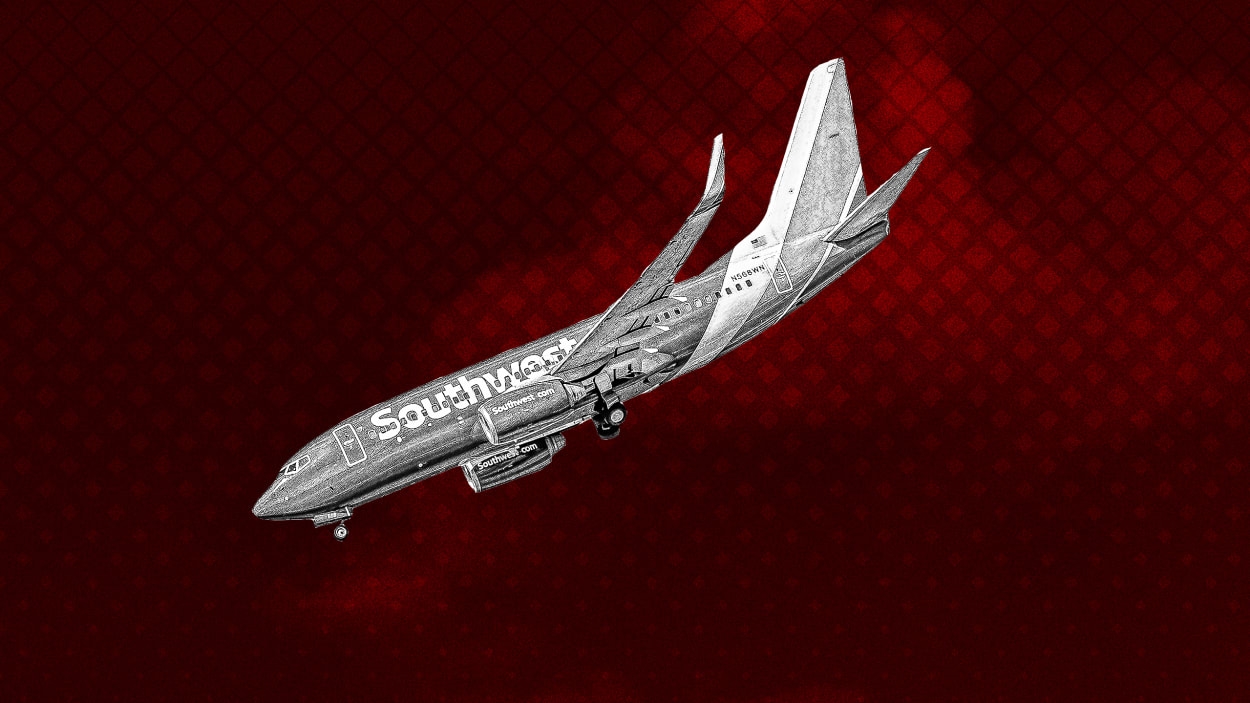Southwest Airlines passengers continued to deal with a hellscape of holiday travel disruptions on Wednesday after a major winter storm caused logistical havoc that overwhelmed its scheduling system.
Sadly for many impacted travelers, immediate relief does not appear to be in sight. “As we continue the work to recover our operation, we have made the decision to continue operating a reduced schedule by flying roughly one-third of our schedule for the next several days,” the airline said in a statement on Tuesday. According to the flight-tracking service FlightAware, Southwest has already canceled 62% of its planned flights for Wednesday, or more than 2,500 flights. The airline has canceled more than 15,000 flights since last week, according to CNN.
Here’s what to know about what’s happening with Southwest Airlines:
Unprecedented weather event: Last week, a very ill-timed winter storm and “bomb cyclone” affected almost the entire country, bringing sub-freezing temperatures, snow, high winds, and ice, and grounding flights in many major cities. According to
AccuWeather, this was no ordinary weather event—more than
200 million people were impacted. Southwest was
hardly alone among major airlines in dealing with cancellations. But Southwest’s problems went above and beyond the normal service disruptions, and even days later, the airline continues to struggle with scheduling.
“
Communities, not hubs“: In a
video apology posted to the Southwest website on Tuesday, CEO Bob Jordan blamed the breakdown and ongoing disruptions on the airline’s own logistics and scheduling processes. “Here’s why this giant puzzle is taking us several days to solve,” Jordan said. “Southwest is the largest carrier in the country not only because of our value and our values, but because we built our flight schedule around communities, not hubs. So we’re the largest airline in 23 of the top 25 travel markets in the U.S.—cities where large numbers of scheduled flights simultaneously froze as record bitter cold brought challenges for all airlines.”
Accusations of outdated software: Michael Santoro, vice president of the Southwest Airlines Pilots Association, has
told some media outlets that while the bad weather did spark the disruptions, the airline relies on “vastly outdated” scheduling software that essentially can’t keep track of Southwest’s network. Jordan, for his part,
conceded in his apology video that the current infrastructure is inadequate. “Clearly we need to double down on our already-existing plans to upgrade systems for these extreme circumstances.” (Reached for comment about the software accusations, a Southwest spokesperson did not address them specifically but referred
Fast Company to the CEO’s video.)
Playing catch-up: Jordan went on to indicate that Southwest flights would continue to be reduced until the airline’s systems were back up and running. “Our network is highly complex, and the operation of the airline counts on all the pieces—especially aircraft and crews—remaining in motion to where they’re planned to go,” he said. “With our large fleet of airplanes and flight crews out of position in dozens of locations, and after days of trying to operate as much of our full schedule across the busy holiday weekend, we reached a decision point to significantly reduce our flying to catch up.”
Federal scrutiny: Transportation Secretary Pete Buttigieg has
promised a full investigation into Southwest’s travel disruptions, which he described as a “meltdown” and “unacceptable.”
What can passengers do? Southwest Airlines has set up a dedicated webpage for the travel disruptions where affected travelers can rebook flights or request a refund. However, the systems are likely to be overwhelmed. According to an FAQ section, “High demand may impact the functionality of our website.” The good news is, customers have 30 days from their originally scheduled itinerary.
You can learn more here.
This story is developing…



